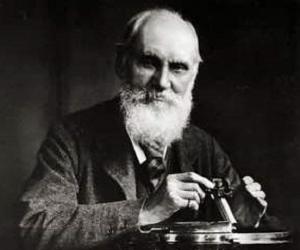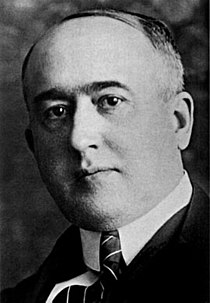May
| Sensor for measurement of ionospheric plasma characteristics on the MAGION 2 satellite. Deployable booms and electric field sensor in the front. |  |
| Sensor for measuring ionospheric plasma characteristics on the MAGION 2 satellite. In the front part of the picture you can see the deployable booms and the electric field sensor. All MAGION satellites studied the Earth's MAGnetosphere and IONosphere and received commands from the Panská Ves control and receiving station. | |
Ionospheric sounding at Průhonice has been operated since 1957. Until 1984 the measurement was realized by the Soviet (Russian) ionosonde AIS; in 1984 the equipment was replaced by Australian ionosonde IPS-42. Since January 2004 the ionospheric service has been provided by the Digisonde.
Contact with the MAGION 5 satellite was lost soon after launch (separation from the main satellite in orbit) due to a power failure from the solar panels. Analysis showed that this was probably a mechanical problem causing a short circuit. It was hoped that this problem would disappear due to thermal cycling in orbit. Attempts to restore the connection therefore continued. On 8 May 1998, communication was restored and MAGION 5 provided much useful data from then on until 2001, when the attitude control gas was exhausted.
 Stanislav Hanzlík (11 May 1878 in Plzeň - 8 October 1956 in Prague) was a Czech meteorologist of world importance, director of the University Meteorological Institute and professor of meteorology and climatology at Charles University.
Stanislav Hanzlík (11 May 1878 in Plzeň - 8 October 1956 in Prague) was a Czech meteorologist of world importance, director of the University Meteorological Institute and professor of meteorology and climatology at Charles University.
In 1902, he received a doctorate in philosophy, continued his studies at the universities of Strasbourg, Berlin, Harvard University in Cambridge in the United States, and held internships in Washington and Vienna. In 1907 he published in Prague his first discovery work On Cold and Warm Anticyclones, and in 1908 in Vienna he published a similar work in German, Die räumliche Verteilung der meteorologischen Elemente in den Antizyklonen. Ein Beitrag zur Entwicklungsgeschichte der Antizyklonen." (Spatial distribution of meteorological elements in anticyclones. In 1912 he published a second important and revealing work on cyclones, "Die räumliche Verteilung der meteorologischen Elemente in den Zyklonen. Ein Beitrag zur Entwicklungsgeschichte der Zyklonen." (The spatial distribution of meteorological elements in cyclones. A contribution to the development of cyclones.). Both previous papers influenced the work of the Norwegian meteorological school led by Vilhelm Bjerknes.
Stanislav Hanzlík in these papers made use of knowledge gained in the United States and observations from mountain observatories. He was one of the first meteorologists to describe the vertical profile of pressure formations and is credited with the discovery of "warm anticyclones".
During his lifetime he travelled to many countries and applied his knowledge from these journeys not only in his lectures but also in his book Basics of Meteorology and Climatology, which was published three times - the last time in 1956.
Source: Stanislav Hanzlík. (20. 06. 2023). Wikipedie: Otevřená encyklopedie. Získáno 13:32, 20. 12. 2023.
![]() EUMETSAT is a European intergovernmental organisation set up to build and operate a system of meteorological satellites for the use of its member states. EUMETSAT was created by a gradual spin-off from the European Space Agency (ESA), and since 1986 has been an independent organisation based in Darmstadt, Germany. From the beginning, EUMETSAT operated mainly geostationary meteorological satellites under the name Meteosat, and later also various polar-orbiting meteorological satellites. The Czech Republic became a cooperating member of EUMETSAT in 2005 and has been a full member of the organisation since 2010.
EUMETSAT is a European intergovernmental organisation set up to build and operate a system of meteorological satellites for the use of its member states. EUMETSAT was created by a gradual spin-off from the European Space Agency (ESA), and since 1986 has been an independent organisation based in Darmstadt, Germany. From the beginning, EUMETSAT operated mainly geostationary meteorological satellites under the name Meteosat, and later also various polar-orbiting meteorological satellites. The Czech Republic became a cooperating member of EUMETSAT in 2005 and has been a full member of the organisation since 2010.
More information:
Oliver Heaviside was a physicist and mathematicien who predicted the existence of the ionosphere, an electrically conductive layer in the upper atmosphere that reflects radio waves. He investigated elektricity and significantly contributed to the Maxwell's field equations and vector analysis. In Electrical Papers (1892), he dealt with theoretical aspects of problems in telegraphy and electrical transmission, making use of an unusual calculatory method called operational calculus, now better known as the method of Laplace transforms, to study transient currents in networks. His work on the theory of the telephone made long-distance service practical. In Electromagnetic Theory (1893–1912), he postulated that an electric charge would increase in mass as its velocity increases, an anticipation of an aspect of Einstein’s special theory of relativity. When wireless telegraphy proved effective over long distances, Heaviside theorized that a conducting layer of the atmosphere existed that allows radio waves to follow the Earth’s curvature instead of travelling off into space in a straight line. In mathematics he is acknowleded for inventing operational calculus as one of the three most important discoveries of the late 19th Century.
 Edward Norton Lorenz (May 23, 1917 – April 16, 2008) was an American mathematician and meteorologist who established the theoretical basis of weather and climate predictability, as well as the basis for computer-aided atmospheric physics and meteorology. He is best known as the founder of modern chaos theory, a branch of mathematics focusing on the behavior of dynamical systems that are highly sensitive to initial conditions.
Edward Norton Lorenz (May 23, 1917 – April 16, 2008) was an American mathematician and meteorologist who established the theoretical basis of weather and climate predictability, as well as the basis for computer-aided atmospheric physics and meteorology. He is best known as the founder of modern chaos theory, a branch of mathematics focusing on the behavior of dynamical systems that are highly sensitive to initial conditions.
His discovery of deterministic chaos "profoundly influenced a wide range of basic sciences and brought about one of the most dramatic changes in mankind's view of nature since Sir Isaac Newton," according to the committee that awarded him the 1991 Kyoto Prize for basic sciences in the field of earth and planetary sciences.
Zdroj: "Edward Norton Lorenz," Wikipedia, The Free Encyclopedia
 Richard Christopher Carrington was an English amateur astronomer whose 1859 astronomical observations demonstrated the existence of solar flares as well as suggesting their electrical influence upon the Earth and its aurorae. His long sunspot observation led to discovery of the differential rotation of the Sun.
Richard Christopher Carrington was an English amateur astronomer whose 1859 astronomical observations demonstrated the existence of solar flares as well as suggesting their electrical influence upon the Earth and its aurorae. His long sunspot observation led to discovery of the differential rotation of the Sun.
Carrington was documenting sunspots and directly witnessed the extraordinary solar outburst of 1 September 1859. The geomagnetic solar flare hit the Earth the following days, the main body of which fell over the American continents. The Earth experienced an unprecedented geomagnetic storm, with telegraph systems going haywire and auroral displays — normally confined to polar latitudes — visible in the tropics, according to NASA Science. In these early days of electrical communication, the telegraph systems was the most affected. Lines all over Europe and North America failed, in some cases giving telegraph operators electric shocks. Telegraph pylons threw sparks. Some telegraph operators could continue to send and receive messages despite having disconnected their power supplies. Based on Carrington's observation of the solar storm, this event now bears the name of the Carrington Event, and events of similar magnitude are classified as "Carrington-class" events.
Milutin Milankovitch was a Serbian mathematician and geophysicist. He linked long-term changes in Earth's climatic patterns to astronomical factors affecting the amount of solar energy received at Earth’s surface. The cyclical orbital movements which are able to explain the timing of glacial-interglacial cycles are now known as Milankovitch cycles. He died on December 12, 1958.


